Learn how to create a safe and accessible bathroom without sacrificing style

Sturdy grab bars provide something for you to hold on to as you’re entering and exiting the shower or sitting down on a shower bench or seat. Install one on the outside of your shower and on each of your interior walls so you can safely navigate the space.
The standard vanity height is 31½ inches (not including your countertop). This isn’t high enough for some homeowners. Raising the cabinet height to 34½ inches (this will reach standard kitchen counter height, including a 1½ inch countertop) can prevent you from having to hunch over as you’re washing up.
There are two exceptions to increasing the vanity height. If you’re more comfortable with the standard vanity height, don’t increase it. Or if you want to make your vanity wheelchair-accessible, choose a counter height of 34 inches maximum, as specified in the American Disabilities Act guidelines.
Few things open up a bathroom like glass walls and doors. But keep in mind that shower glass requires upkeep. You need to squeegee it regularly to avoid streak marks. This may make it less convenient for a bathroom designed for aging in place. There are heavy-duty types of shower glass that reduce maintenance, but expect to pay more for it.
The better your bathroom lighting is, the less strain on your eyes. You also don’t want to miss any wet spots that can be hidden by shadows. Good lighting comes in many forms, including recessed lighting, vanity lighting, lamps and natural light. You may even consider placing lighting inside an enclosed shower.
Porcelain can last a lifetime, so chances are you won’t have to replace it as you get older. It’s also perhaps the easiest surface to clean. Water and a rag normally do the trick.
If you’re concerned about grout, look for porcelain tile with a rectified edge. Finely cut edges allow for thin grout joints (as little as 1/16 inch in some styles). You can purchase a presealed grout as well.
No matter which kind of flooring you decide to put in your bathroom, choose one that has high slip resistance. A slick tile can increase the likelihood of an injury from a fall. You can spot a floor with good slip resistance by looking for grooves or feeling for texture. Generally speaking, the more textured a floor is, the higher its slip resistance.
A curbless shower entrance minimizes your risk of tripping over a step as you enter the shower. It’s also a wheelchair-accessible feature.
If you forgo a shower step, your shower floor will need to be properly sloped to allow water to drain correctly. If you do include a step, don’t make it large and bulky.
Pay attention to the width of the lip on a bathtub. When you have to step over a wide tub surround, the gap between your legs gets larger, which can impair balance and increase the chances of falling. A narrower edge can be better for getting into the tub.


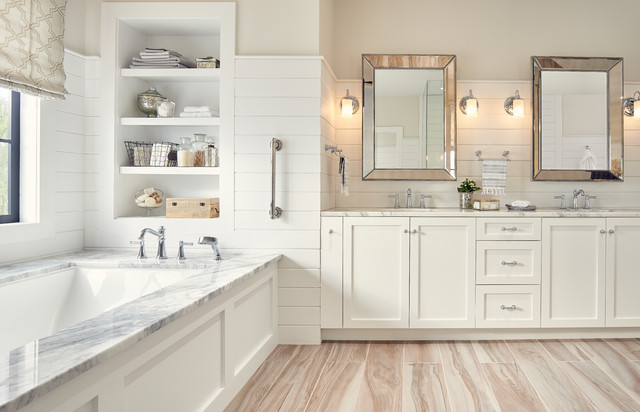



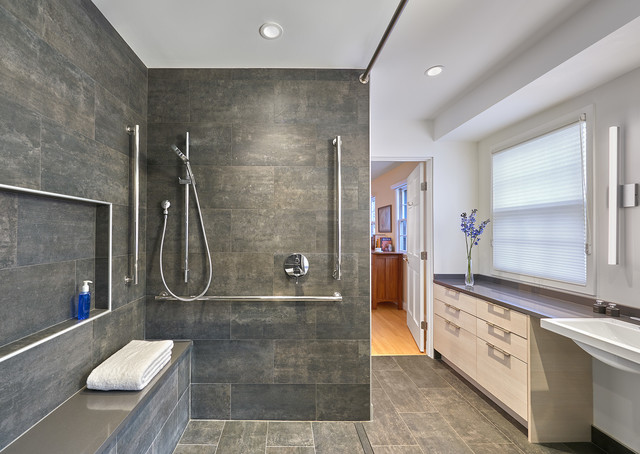






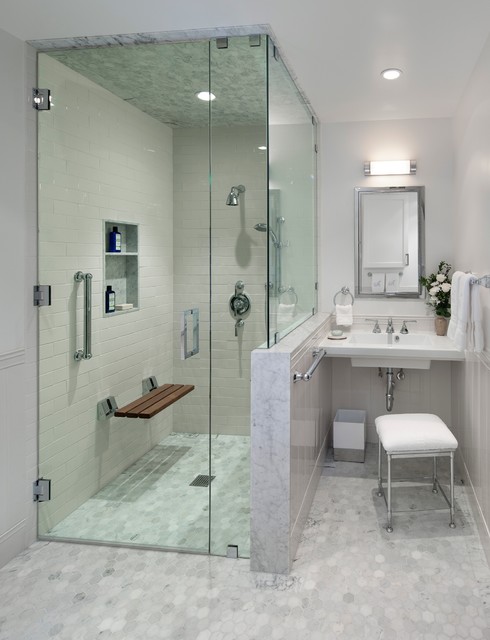
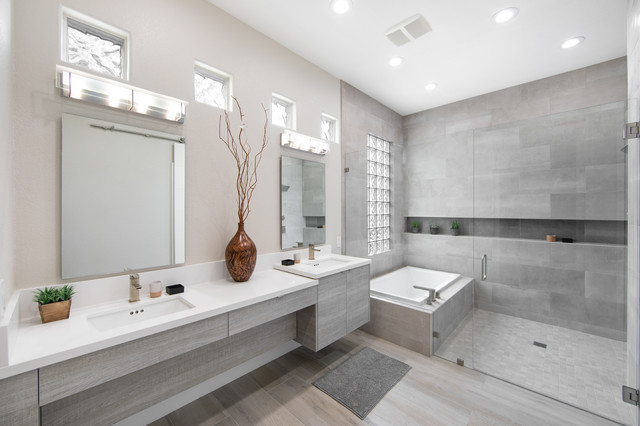



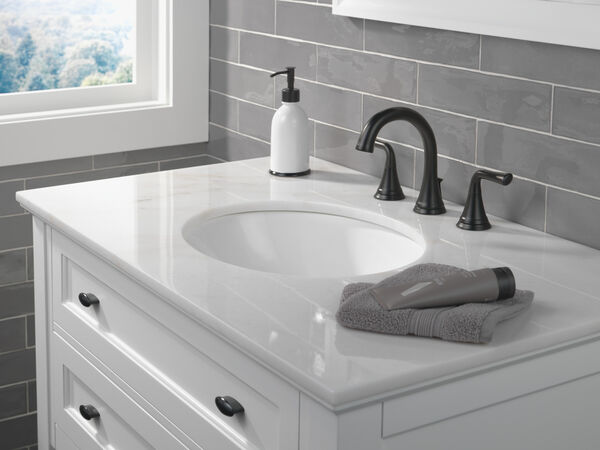
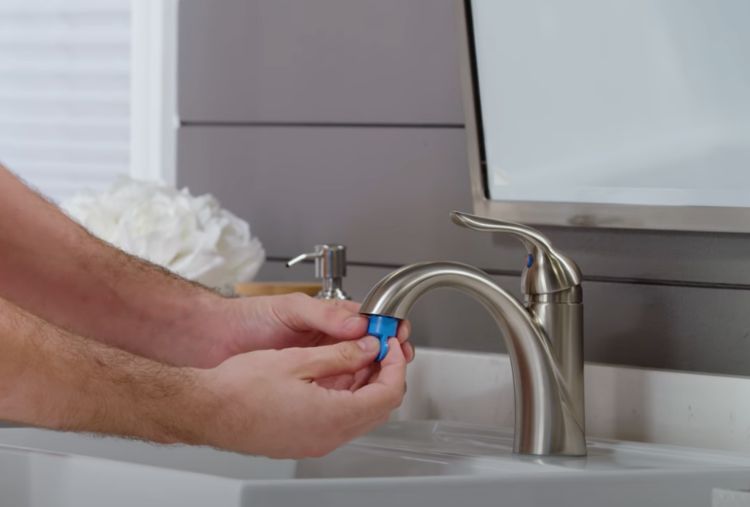
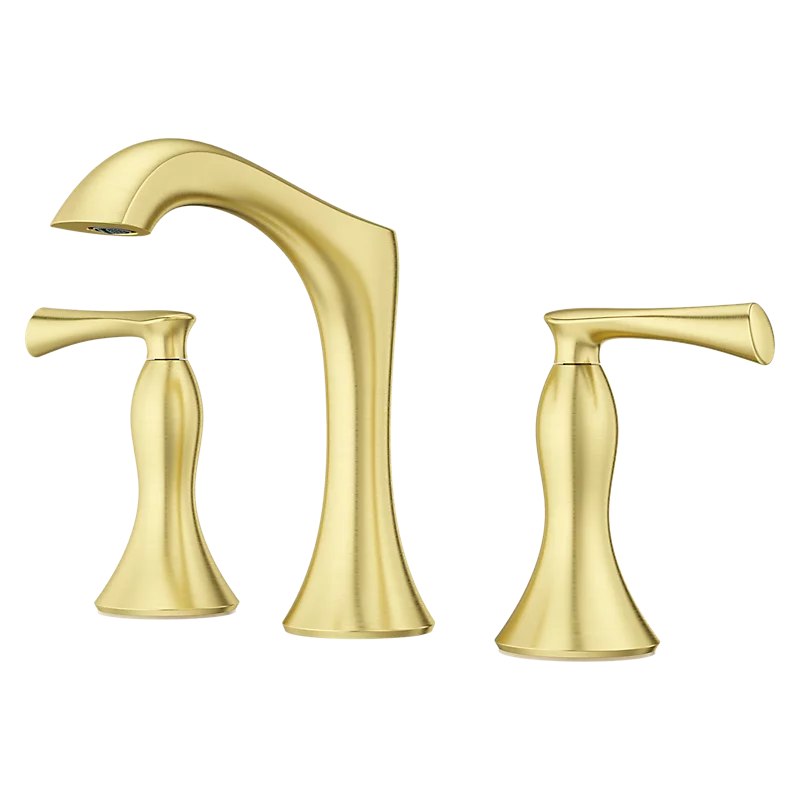
A safe place to sit in the shower is vital for an age-proof bathroom design. Decreasing the amount of time you stand in the shower not only eases the strain on your body, it also reduces the chances of slipping and falling. Be sure to install or buy a bench that is large enough to comfortably sit and bathe on.